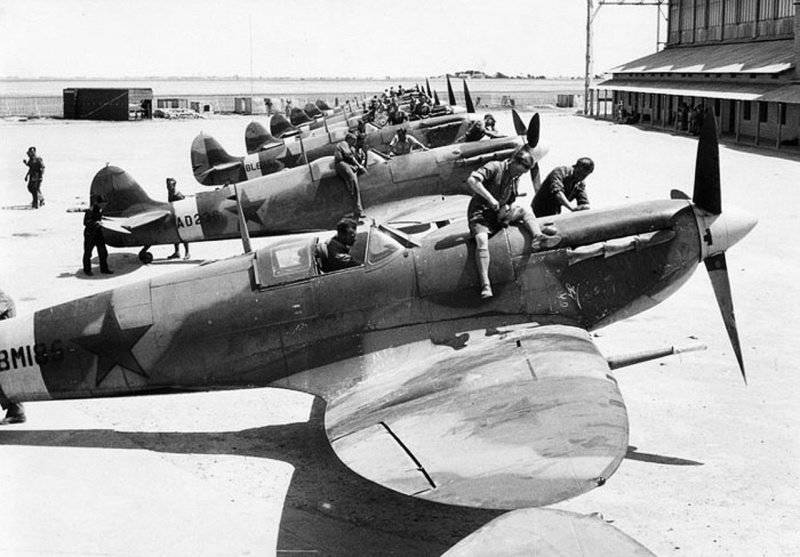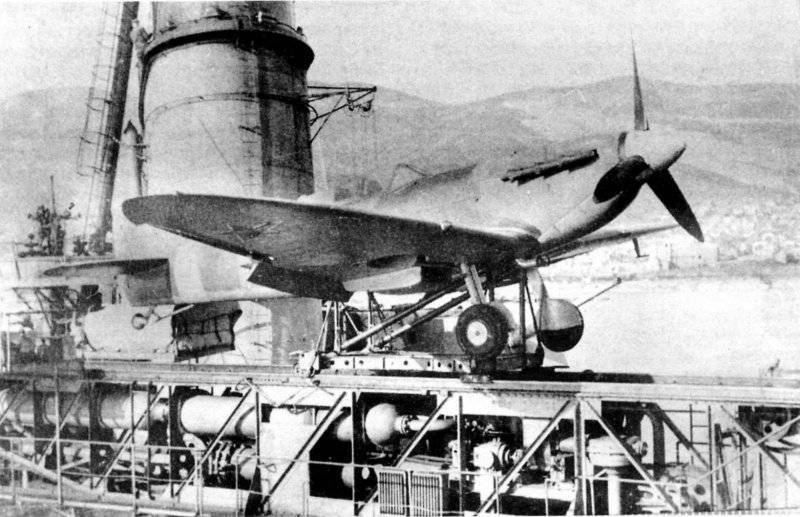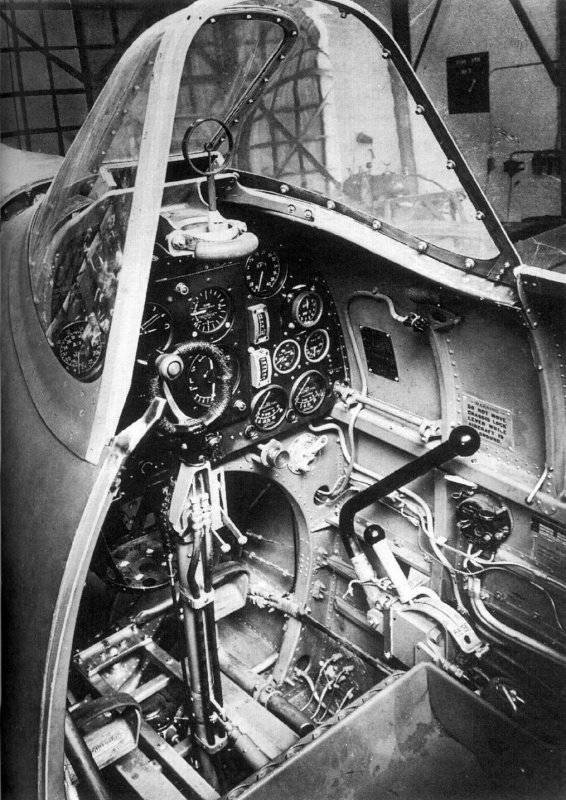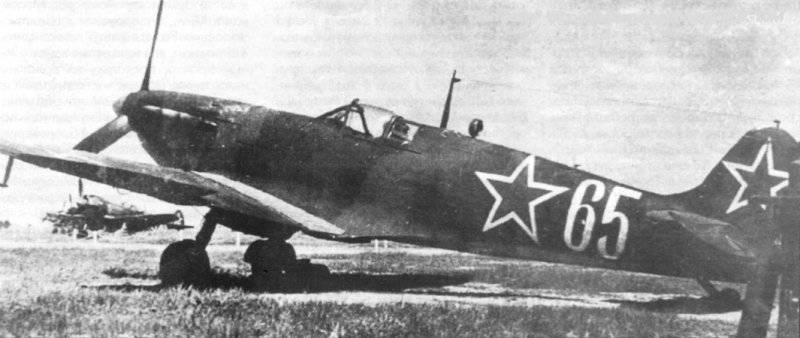Soviet aces on Lend-Lease fighters. Part of 4. "Spitfire"

A group of PRMk.lV reconnaissance aircraft again flew to the North in September 1943. The target was the Altenfjord, where the base of the German battleships Scharnhorst and Tirpitz was located. However, the British could not find their parking. This task was performed by the squadron commander Elnin L.I. on the "Spitfire", which was equipped with an additional side aerial camera. Using, obtained by the Soviet pilot, intelligence British submarines temporarily disabled the Tirpitz. The English pilots returned home, and their Spitfires remained in the 12 regiment and were used until the end of the war. It was these 118 vehicles on April 1 that once again carried out reconnaissance of the Tirpnz site, on which Lancaster bombers delivered a decisive blow. "Spitfires" scouts were used in the preparation of the Pechengo-Kirkeness offensive operation of the Soviet troops.
Total aircraft of the Northern Fleet during the war years received 10 aircraft PRMk.lV, but at the same time in the ranks were no more than 4 machines. These aircraft made a significant contribution to the victory in the North, at least incommensurate with their number. It was a case of an excellent combination of excellent technology, competent application and well-trained flight personnel.
The British government at the end of 1942 finally agreed to massively supply Spitfire fighters to the Soviet Union. Already in January of next year, the first Spitfire modifications of the Mk V were delivered through Iran. In total, about 150 fighter data was transferred over the year (plus 50 fuselage as a source of spare parts was supplied to this).
The first regiment that received the "Spitfire" is the 57-th Guards Fighter Regiment, formed in the 1938 year in Baku as the 36-th Fighter Regiment. From 27 November 1941, this unit was part of the 72 th Fighter Division. He was headed by Major Osipov Alexander, who fought in the skies over the Crimea and Stalingrad on the I-16. In the regiment, flying on the I-16, two aces grew up - the regiment commander, on whose account 4 personal and 2 group victories and senior lieutenant Sergey Azarov (7 personal victories and 8 in the group).

The regiment's pilots, having passed the few I-16s, were taken to Baku in late November, where they were sent to Kara-Khala airfield on the 1942-th reserve aviation regiment in early December. Here, from 25 to 10.12.1942, they retrained to the Spitfires Mk. Vb.
36 th Fighter Wing 8 February 1943, when there was still a re-training, became 57-th Guards.
The 32 regiment aircraft on the morning of April 23 were prepared for departure from Kara-Khala airfield. During the take-off of the guard, Sergeant Kulagin, the pilot of the 3 squadron, crashed into the plane of the guard of Senior Lieutenant Faustov, who was standing on the ground. As a result, both aircraft were seriously damaged. In Kutaisi, at the intermediate airfield, another aircraft was left (the engine of the car of the senior lieutenant Syachin did not start). Thus, from the airfield not far from Popovicheskaya station, 24 Spitfires began to operate from April 29.
The regiment entered the 216 th mixed aircraft division, which included five regiments: the 16 and 57 th Guards fighter regiments, the 42 and 45 th fighter regiments, and the 765 st attack aviation regiment. The aviation division was armed with 114 aircraft, of which: 8 P-40, 14 Yak-1, 15 IL-2, 29 Spitfires and 48 P-39. In the sky over the Kuban fierce battles were fought, during which the "Spitfires" were very quickly knocked out. At the beginning of July, the regiment 1943 surrendered the remaining Spits to the 821 fighter regiment, and began to receive the P-39Q. The most productive Soviet pilot on the "Spitfire" - Senior Lieutenant Azarov Sergey, who won the 12 victories, flying in the 57 Guards Fighter Aviation Regiment.
Sergey Azarov was shot down during the next 8 combat sortie on May 1943, he made an emergency landing, but died two days later in the hospital. Posthumously, Azarov was awarded the title Hero of the Soviet Union. In the spring of 1943 of the year, the 821 th Fighter Regiment began a re-training on Spitfire Mk. Vb. In July, the regiment was sent to the front of the 25-th mixed aviation division. However, the pilots fought on this fighter for long. By the end of August, serious problems emerged with the engines, and the 216 regiment of August was taken to the rear for re-equipment of the Air Cobra.

Another effective subdivision that fought on the Spitfire Mk V was the 16 th fighter regiment from the 320 th fighter air defense division, which is part of the Moscow air defense zone. Spitfires, like most foreign-made fighters, had good radio equipment, which made it possible to more effectively direct fighters from the ground to the target.
Several "Spitfires" Mk V in 1943 received the 7 th Fighter Wing of the Black Sea Fleet Air Force, but they were used without much success. The only thing that can be noted is the experience of using these fighters from a catapult.
Since February 1944 in the USSR began to arrive "Spitfire" Mk IX. According to Western sources, a total of 989 LF IXE and HF IXE, as well as 190 LF IHS were supplied. The aircraft were distributed between the air defense regiments, of which only the 26 and 27 th guards fighter regiments from the Leningrad district of air defense managed to make war.
Prior to this, the 26 th Guards Fighter Wing was equipped with Hurricane and Tomahawk, as well as various domestic-made fighter aircraft. He became the first regiment to receive the Spitfire Mk IX. The regiment commander is 31-year-old Lieutenant Colonel Matsievich Vasily, who was already considered an "old man" by that time, having served in the air force 8 for years. Battle experience Matsievich received in September 1939, participating in the occupation of Poland, then in the Finnish war. The Great Patriotic War was met by the deputy commander of the squadron of the 26 th Fighter Aviation Regiment, which was part of the air defense system of Leningrad. He won his first victory by shooting down Non-111, on the night of 25.10.1941. 26-th air regiment with November 21 1942, the Guards became. By February, 1943 Mr. Macievich made 196 sorties, in which 16 won individual and 6 group victories. Twice was shot down. 14 February 1943 was awarded the title Hero of the Soviet Union, and later the rank of major. Subsequently, the regiment became. 26-th Guards Fighter Wing, receiving "Spitfires" continued to fight against the Germans, who stayed here much longer than on the rest of the front.
The productive pilot of the 26 Guards Fighter Aviation Regiment was Nikolai Shcherbina, who received a flight education even before the war. The war began, brilliantly mastered the MiG-3, in the same regiment. So, 29.08.1941 recorded three victories at once. Shcherbina in 1944, received the rank of captain and became the navigator of the regiment. They were made 424 combat sorties, of which 120 - night. Wins 11 wins, including 3 - nightly. Another 12 aircraft was destroyed by Shcherbina on the ground. Unfortunately, the number of victories won on Spitfire is not known for certain, but there were at least two of them. Shcherbina 24.08.1944 was awarded the title Hero of the Soviet Union.
The 27 th Guards Fighter Wing was transformed on November 21 1942 from the 123 th Fighter. One of the best pilots who started the war in this regiment was Karpov Alexander. Sergey Begev was his constant slave. The productive couple in July 1943 of the year was shot down, while Beige died and Karpov shot down two planes and attempted to ram the third.
In August 1943, Karpov received the rank of captain and began to command the squadron. The first Hero Star received for 370 combat sorties and 16 individual and 7 group victories. Second Star - 22.08.1944. At the end of the summer of the year, Karpov scored at least two victories on Spitfire. It was on his 19 September that he was shot down over Estonia in a battle with PV-190. 20.10.1944 Karpov fainted as a result of the interception of a high-altitude reconnaissance aircraft, as a result of which he crashed. By that time, his flyer had 519 combat missions and 30 individual and 7 group victories.
At the end of the war, the 946 "Spitfires" (the bulk of the Mk IX) remained in the air defense units, but soon they were replaced by more modern machines.

Information